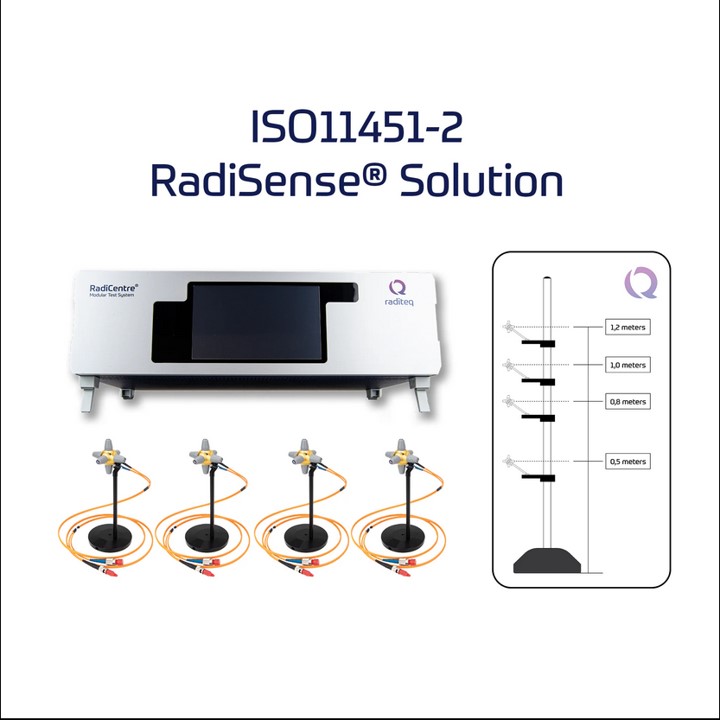
ISO11451-2 Application Note - Raditeq RadiSense Solution
The ISO11451-2 is the internationally recognized ‘basic’ standard developed to address the testing of electronic components. This included systems immunity against radiated electromagnetic disturbances. Specifically, the immunity of passenger cars and commercial vehicles to electrical disturbances caused by off-vehicle radiation sources.
This standard encompasses vehicles with diverse propulsion systems. For example spark ignition engines, diesel engines, and electric motors. Furthermore, it focuses on assessing electromagnetic disturbances within the narrow-band electromagnetic field.
As defined in this standard, the calibration setup for radiated susceptibility (immunity) can be performed using one single reference probe. Alternatively it can also be done using four reference probes, performing the test in an anechoic chamber. (Absorber-Lined Shielded Enclosure – ALSE). The aim of using this ALSE is to create an indoor EMC test facility that simulates an open field test environment. preseting the ISO11451-2 RadiSense Solution!
This application note explains a ISO11451-2 RadiSense Solution. Furthermore, it shows how to configure and perform the calibration using a single reference probe and four probes in one setup. In addition to the RadiSense® it features using Raditeq’s RadiMation automation software.
ISO11451-2 Test requirements
As defined in the ISO11451-2 standard, testing should be performed using radiated electromagnetic field. Generating this field should be covering the specified frequency range from 10 kHz to 18 GHz. The generated electromagnetic field should be measured using isotropic E-field probes. These shall be electrically small in relation to the wavelength of the signal. Finally, they should communicate using a fibre optic link.

Download full application note
Annex A – paragraph A.2 of the ISO11451-2 basic standard provides classification of field strength test levels varying from 20 V/m up to 100 V/m. Note that this field level is depending on the frequency range. Typically, the Automotive OEM standards, specify test levels of up to 200 V/m and 300-600 V/m for specific frequency ranges (Radar Pulse).
 Phase Control with Galvanic Isolation
Phase Control with Galvanic Isolation  Tektronix unveils SignalVu Spectrum Analyzer Software Version 5.4 for analysis of up to eight simultaneous signals
Tektronix unveils SignalVu Spectrum Analyzer Software Version 5.4 for analysis of up to eight simultaneous signals  Würth Elektronik expands its range of power inductors
Würth Elektronik expands its range of power inductors  Discover the future of 24/7 EMF monitoring with Narda SMARTS AMC!
Discover the future of 24/7 EMF monitoring with Narda SMARTS AMC!  What is gPTP?
What is gPTP?